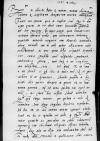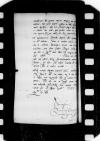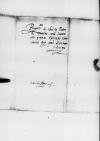Letter #2830
Seweryn BONER to Ioannes DANTISCUSCracow (Kraków), 1545-05-18
| received Heilsberg (Lidzbark Warmiński), 1545-05-28 Manuscript sources:
| ||||
Text & apparatus & commentary Plain text Text & commentary Text & apparatus
Reverendissimo in Christo Patri et Domino, domino
Reverendissime in Christo Pater et Domine, domine observandissime.
Salutem et legitimam obsequiorum meorum commendationem.
Facere non possum, quin in singulas litteras Reverendissimae Dominationi Vestrae agam gratias, ea esse solent omnes humanitate praeditae vel hae proximae, quas nuper accepi, quam humanissimis contextae fuerunt verbis, qua sententiarum verborumque gravitate monachi Hungarici cum monacho Germanico utroque exitiali sua in arte auctore collationem nobis exhibuerunt, iis vero quam belle respondet Marphorius, omnia profecto sunt dignitatis, prudentiae eruditionisque plena, sunt itaque a me singulari cum voluptate lecta.
Sed quod Reverendissima Dominatio Vestra a me petiit, si quid hic in novis esset, id ei perscribere ut ne gravarer, libenter profecto in hoc, sicuti alio quovis obsequii in genere Reverendissimae Dominationi Vestrae morem gererem, sed est nunc quidem eius apud nos nihil, nisi forte huc referri libeat adventum serenissimi domini
De Wormaciensi
Aliud scripto dignum occurrit nihil, commendatissi[mus] itaque Reverendissimae Dominationi Vestrae esse cupio inque id mea obse[quia] ei offero sine exceptione ulla ad omnem eius ... prona. Opto autem Reverendissimam Dominationem Vestram sanam sum[ma] cum voluptate felicitateque diu valere.
Datae
Reverendissimae Dominationis Vestrae paratissimus servitor
[1 ] Wormaciensis conventus imperii - Imperial Diet of


